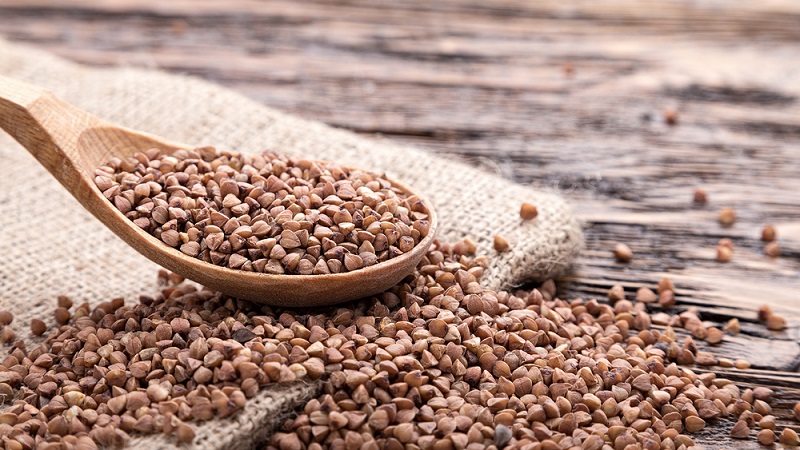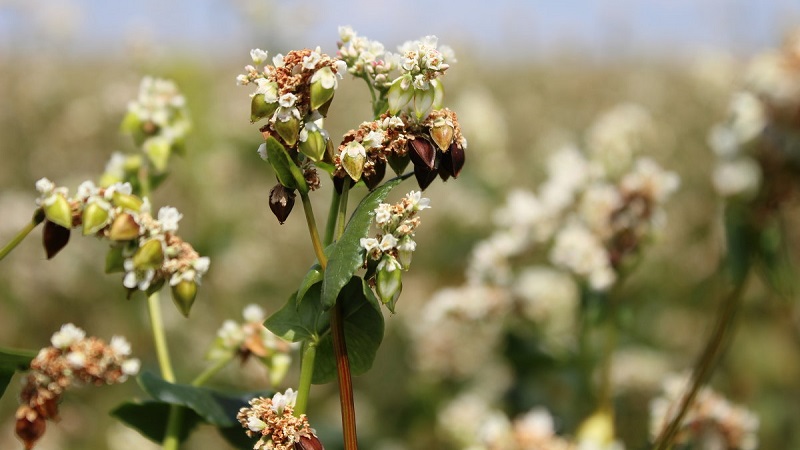What is buckwheat - cereal, cereal or grain?
Buckwheat began to be cultivated about 5 thousand years ago in eastern countries. In Russia, they learned about it in the 7th century, and in Europe - in the 15th century. The Slavic name "Greek grain" appeared due to the fact that, according to one version, Greek monks at monasteries were the first to cultivate the plant. Having abandoned the cultivation of buckwheat in the XX century, modern Europeans again showed interest in it, as to an extremely useful product.
In the article we will figure out whether buckwheat is a cereal or grain, from which cereal it is obtained.
The content of the article
Buckwheat is a cereal or not
Buckwheat is not a cereal, but its seed is eaten by people, birds, and animals.... Despite the fact that buckwheat does not belong to cereals, it is included in this section due to the huge similarity in the use of these products.

From sowing buckwheat get:
Also produce buckwheat flour... It is widely used in the preparation of healthy dishes, but in terms of properties in the composition of the dough it is much inferior to wheat or rye due to the lack of gluten.
Why the comparison is incorrect
For cereals, such signs are characteristic:
- stem in the form of a straw;
- leaves are long, narrow;
- inflorescence - ear;
- the fruit is a weevil.
Cereals include wheat, rye, millet, oats, rice.
Common buckwheat belongs to the family of the same name Buckwheat... It is a herbaceous bread and honey plant. Type - pseudo-grain cereal; it also includes amaranth, quinoa and other similar crops.
Buckwheat has the following signs:
- stem branched, slightly ribbed;
- leaves are heart-shaped;
- inflorescences of 3-5 small flowers;
- the fruit is the seed.
The plant is closely related to rhubarb, sorrel... It cannot be compared with cereals, because, according to the scientific classification, buckwheat is classified as dicotyledonous, and cereals are classified as monocotyledonous. Buckwheat is a grain, but not a cereal, but a buckwheat product.
What cereals does it belong to
Buckwheat (the plant from which buckwheat is obtained) is not a grain crop, it is included in the group of pseudo-grains, like sesame, quinoa, quinoa. These plants are cultivated for the sake of obtaining grain, which is eaten. Their seeds are used in the same way as grain - they make cereals, make flour.

Buckwheat, like other pseudo-grains, is rich in carbohydrates, protein, fiber and minerals... Carbohydrates are slowly absorbed and provide a feeling of fullness for a long time, and plant fibers, which are 10% in buckwheat, improve the functioning of the digestive tract. Pseudo-grains are also good because they can diversify the diet of people suffering from celiac disease - gluten intolerance (gluten).
Reference. Due to the fact that buckwheat is a herb, it has not yet been possible to obtain a genetically modified product. The demand for buckwheat is growing, and in agriculture, the culture is in demand as a plant that expands the range of producers of cereals.
What grain is buckwheat made from?
Buckwheat grains are shaped like beech tree nutscommon in Europe. That is why in some countries the culture is called "beech wheat". Getting buckwheat is a laborious process, which is why the price of the product is traditionally higher than for other healthy cereals.
Raw (green) buckwheat is cleaned and husked, removing the shell... The grains undergo hydrothermal treatment, which improves their technological properties. This results in increased core strength and shell fragility.The groats acquire a spicy nutty flavor and a beautiful golden brown hue. From the largest grains, a kernel is produced, which is divided into several varieties. Smolensk groats are made from the remains, and flour is also made.
Reference.Green unprocessed buckwheat is considered a dietary product. Without thermal action, a huge amount of antioxidants, amino acids and trace elements is stored in the nuclei. The most useful is not boiled, but soaked or sprouted green buckwheat.
Conclusion
Despite the fact that cereals are produced from buckwheat, it is not a cereal plant. The culture belongs to the group of pseudo-grains, the fruits of which are not inferior to grain in their useful properties. Cereals are a class of monocotyledons, and buckwheat is a dicotyledonous class. Buckwheat kernels undergo complex and lengthy processing before they become cereals and end up on store shelves.